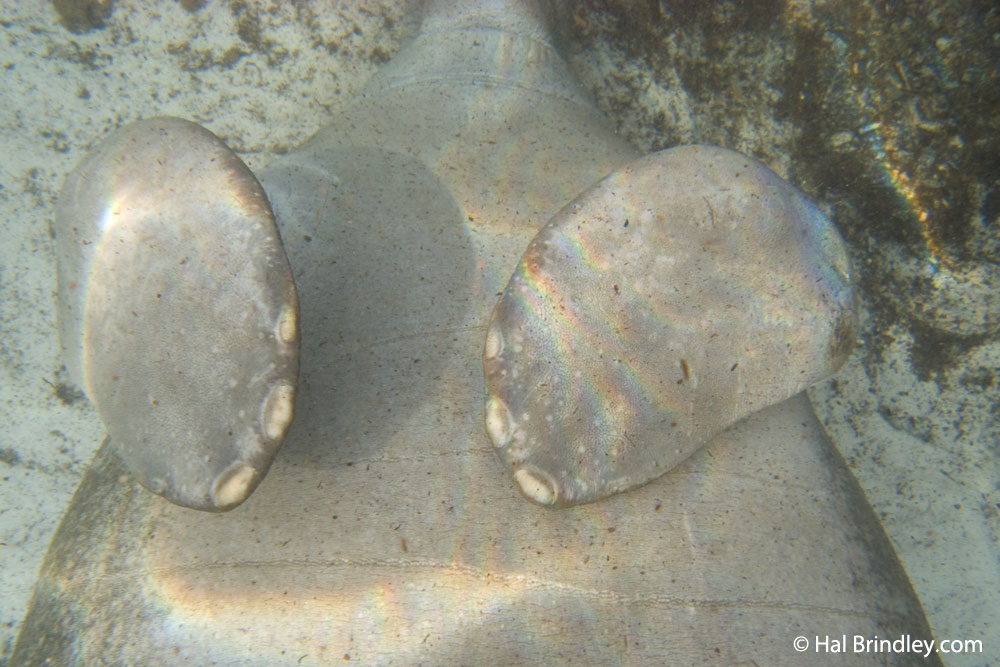1) Armpit Nipples
Manatees are mammals and like all other mammals they nurse their young with milk from mammary glands. Manatees have two nipples, one under each armpit! Watch this video of a manatee calf nursing.
2) The Only Vegetarian Marine Mammal
Manatees and dugongs (sirenians) are the only vegetarian marine mammals alive today.
A manatee needs to eat 10-15% of its body weight each day. A manatee weighs 800-1200 lbs, therefore they need to eat roughly 100 lbs of sea grass and plants daily.
That would be like an average man needing to eat 8 full heads of cabbage per day.

3) Craziest Lips In The Animal World
Manatees have a large flexible upper lip which they use to guide vegetation into their mouths. The surface of this prehensile lip is covered with vibrissae (whiskers). Each whisker has its own separate follicular blood supply and nerve endings which help them feel their way through clumps of floating vegetation and root for nutrients in the seabed.
But what gives them the title of craziest lips of the animal world is that the manatee upper lip is split in two. The left and right sides can move independently and behave like a pair of fingers. Watch this video of amazing manatee lips in action.
4) My Cousin Is An Elephant
The manatee’s closest relative is the dugong. Manatees are not related to dolphins or whales (cetaceans). On land, the elephant is their closest relative. Scientifically, manatees are classified as sub-ungulates and are descended from a common ancestor of the elephant. The other mammals in the Subungulata superorder are hyraxes and aardvarks.
What other similarities can we find between manatees and elephants?

- Manatees have three or four fingernails, much like the toenails on an elephant’s feet.
- They both share a similar atypical heart structure. Elephants and manatees have a circular shaped heart. Most mammals have a single—pointed apex at the base (“heart”—shaped).
- Both manatees and elephants have two mammary glands.
- Similar arrangement of teeth. When one tooth wears down, the erupting tooth behind takes its place. Elephants have a limited supply of replacement teeth. Manatees, on the other hand, have taken an extra step in dental adaptation: the unique “marching molars”. Throughout a manatee’s life, the front molars are constantly replaced, an adaption to their diet of abrasive vegetation. As the teeth wear down, new molars grow in the back of the mouth and gradually move forward. The replacement process continues throughout the manatee’s lifetime. They have a virtually never-ending supply of new teeth.
If you enjoyed our four manatee facts article you may also like:

Cristina Garcia
Zoologist and wildlife photographer. She has worked in the field with jackals, wolves, cheetahs, & leopards. She serves on the Board of Directors of SEE Turtles, a non-profit sea turtle conservation organization.
Read her posts at Travel For Wildlife and see more of her work at Truly Wild, & Our Wild Yard.
